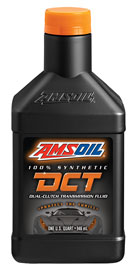Common Fixes for the Shuddering Transmission We get a lot saying our ATF solves the problem after trying about everything else! Here are a few common reasons why your transmission may shift erratically, jerk or hesitate. Low fluid level Depleted fluid frictional properties Poor cold-temperature fluidity Start with the easiest fix There’s an old […]
You are browsing archives for
Tag: transmission
Can I Use Transmission Fluid in Oil to C...
Can I Use Transmission Fluid in Oil to Clean My Engine? Yeah – those youtube rescue channels all show using ATF to clean out the engine – they’re doing it the hard way… ATF is not made to clean sludge from engines. Instead, it’s best to use a dedicated engine flush. _by Phil Collinsburger |May […]
Texas Heat Proof AMSOIL Gives Transmissi...
AMSOIL Synthetic Transmission Fluid Tames Texas Heat Not even a “spot” of sludge in the pan or on the filter despite extreme heat & heavy towing. by John Baker | December 2022 Customer Bryan Bayles, out of Katy, Texas, saw a need while working as a groundwater sampler and turned it into a successful business. […]
How Does a Dual-Clutch Transmission (DCT...
The Function of a Dual-Clutch Transmission Market Technology before it’s ready! John Baker|Jan 02, 2020 11:43 AM A dual-clutch transmission (DCT) is synonymous with high performance. Compared to a traditional automatic transmission, it delivers… Faster, smoother shifts Increased fuel economy Improved performance Surprise breakdowns (well they’ll solve that soon) Although the DCT transmission dates to […]



